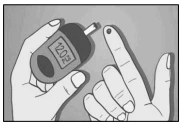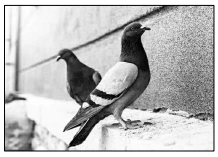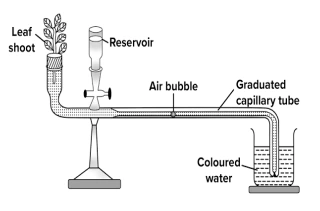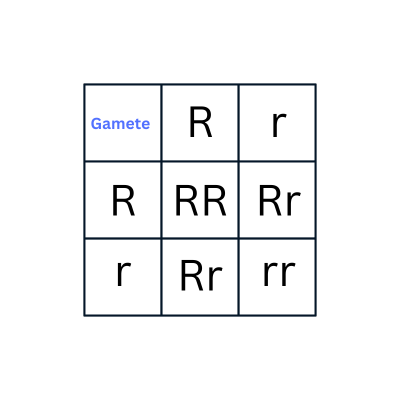ICSE Class 10 Biology Competency Focused Practice Questions Solution:
Long Answer Questions (3 marks each)
Question 53
Rohit’s father has increased thirst and hunger with frequent urination. He also gets fatigued very often. His doctor advised him to get a blood sugar profile test done.

(a) Name the disease based on the symptoms given above.
(b) Which is the hormone whose deficiency causes this disorder?
(c) What is the technical term for high blood sugar level?
Answer:
(a) Diabetes mellitus.
(b) Insulin.
(c) Hyperglycemia.
Question 54
Farhan’s classroom is very close to the compound wall of his school. He was observing two pigeons sitting on the wall. He could see one bird clearly, but the image of the second bird was blurred as the pigeon was a little away from the first.

(a) Name the defect of the eye Farhan is suffering from.
(b) Where is the image of the second pigeon formed in his eyeballs?
(c) What lens can be used to correct the defect?
Answer:
(a) Myopia or near-sightedness.
(b) The image of the second pigeon is formed behind the retina.
(c) Concave lens.
Question 55
Manoj was writing a composition on “The importance of Education in life”.

(a) Name the part of the brain that Manoj uses for writing the composition.
(b) Is it a voluntary or involuntary action?
(c) Trace the nervous pathway using the following terms:
Muscles of the hand, Sensory nerves, Fingertips, Motor nerves, and Brain.
Answer:
(a) Cerebrum.
(b) It is a voluntary action.
(c) Fingertips → Sensory nerves → Brain → Motor nerves → Muscles of hand
Question 56
Study the diagram given below and answer the questions that follow:

(a) Identify the apparatus.
(b) What is it used to measure?
(c) Mention any one limitation of using the apparatus.
Answer:
(a) Ganong’s Potometer.
(b) It is used to measure the water uptake by the cut shoot and hence transpiration.
(c) One limitation of using this apparatus is: the difficulty to introduce an air bubble in measuring tube.
Question 57
The statements given below are false. Correct and rewrite the complete statements:
(a) Fruit ripening is induced by Abscisic acid.
(b) Roots show negative Hydrotropism.
(c) Thigmotropism can be demonstrated by using a Clinostat.
Answer:
(a) Fruit ripening is induced by Ethylene.
OR
Senescence and falling of leaves is induced by Abscisic acid.
(b) Shoots show negative Hydrotropism
OR
Roots show negative Phototropism.
(c) Geotropism can be demonstrated by using a Clinostat.
Question 58
Two heterozygous pea plants having round seeds (Rr) are crossed with each other.
(a) Write the Phenotypic ratio of the offspring.
(b) What will the genotypic ratio of the offspring be?
(c) Which of the above two traits is recessive?
Answer:
Punnett square for the cross is shown below:

(a) Phenotypic ratio — 3 : 1
(b) Genotypic ratio — 1 : 2 : 1
(c) Wrinkled seeds (rr) is the recessive trait.
Question 59
How is the rate of transpiration affected under the following environmental conditions:
(a) High temperature
(b) Low humidity
(c) Low intensity of sunlight
Answer:
(a) High temperature will result in more transpiration.
(b) Low humidity will also result in more transpiration.
(c) Low intensity of sunlight will decrease transpiration.
ICSE Related Links
Chapter-wise Quiz/MCQ/Test:
ICSE Chapter wise Quiz For Class 6
ICSE Chapter wise Quiz For Class 7
ICSE Chapter wise Quiz For Class 8
ICSE Chapter wise Quiz For Class 9
ICSE Chapter wise Quiz For Class 10
Sample Papers
Board Papers
ICSE Class 9 Board Exam Papers
ICSE Class 10 Board Exam Papers
CBSE Related Links
Chapter wise Quiz/MCQ/Test
CBSE Chapter-wise Quiz for Class 6
CBSE Chapter-wise Quiz for Class 7
CBSE Chapter-wise Quiz for Class 8
CBSE Chapter-wise Quiz for Class 9
CBSE Chapter-wise Quiz for Class 10
Sample Papers
Board Papers
CBSE Class 10 Previous years’ Board Papers
Subscribe to our YouTube channel for more educational content.

